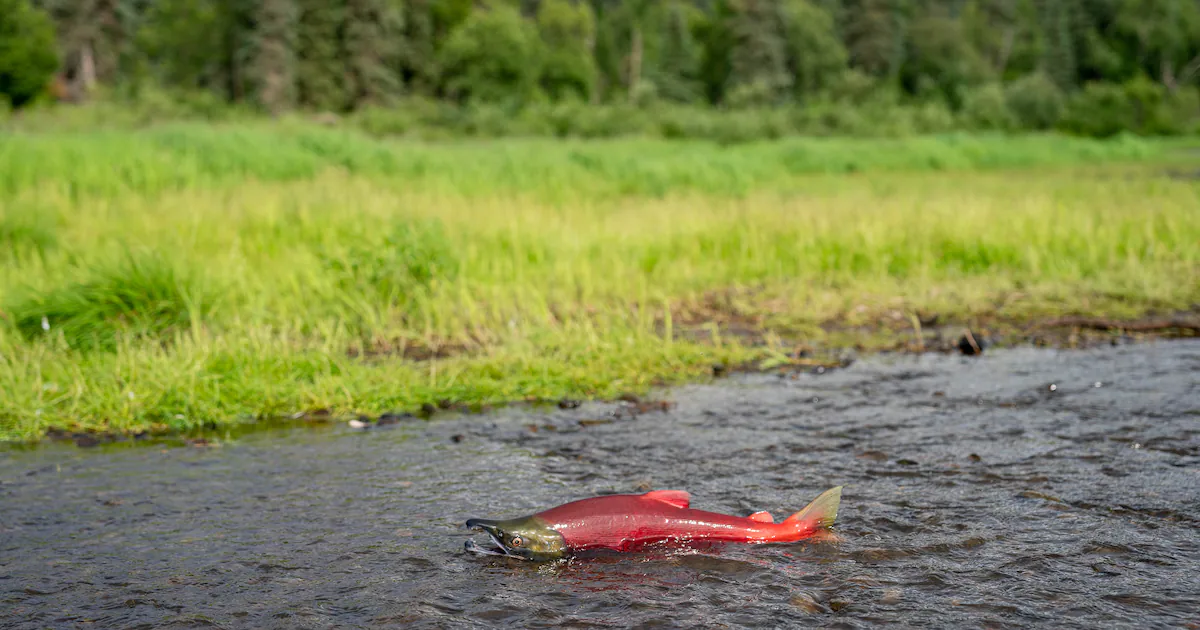Alaska’s Bristol Bay sockeye run and harvest increased this year, with fish sizes a bit bigger

The commercial salmon harvest in Alaska’s Bristol Bay, site of the world’s largest sockeye salmon runs, held a mixture of good news and bad news this year.
The run of sockeye salmon, also known as red salmon, exceeded preseason expectations and totaled 56.7 million fish, the seventh highest since 2005, the Alaska Department of Fish and Game reported in its preliminary summary of the summer harvest. The commercial sockeye harvest was also bigger than expected, totaling 41.2 million fish. That was 18% above the preseason forecast and 23% higher than the recent 20-year average.
The total amount of money paid to fishers delivering their catches totaled $215.3 million, about 7% above the 20-year average of $200.7 million, the department said in its summary.
The bad news is that while Bristol Bay sockeye salmon continued what has been a streak of huge runs — and while sockeye dominate the commercial harvest — other salmon species there continued to falter. Bristol Bay’s harvest of chinook, also known as king salmon, hit a 20-year low this year, totaling only 6,148 fish, compared to the most recent 20-year average of 33,469 chinook, the department reported.
Chinook salmon runs have been weak across much of Alaska and the North Pacific, so the decline is not unique to Bristol Bay.
The opposite trends of Bristol Bay sockeye and chinook salmon have not been fully explained. One hypothesis is that climate change currently favors sockeye, which spawn in warming lakes where habitat may be expanding, over river-spawning chinook.
Tim Sands, a Bristol Bay area management biologist, believes that warming has something to do with the sockeye-chinook divergence.
He said warmer winters at the higher-elevation lakes in Bristol Bay’s Wood River and Nushagak River systems have expanded the ice-free growing season for young salmon.
“These slightly longer growing seasons allow for slightly larger juveniles that are a tad bit more competitive when they enter the ocean and survive at a little higher rate,” he said by email. “The ocean environment is also more hospitable for juvenile sockeye salmon.”
Why that is true for sockeye but not chinook is something he does not know, he said.
It is difficult to figure out what is happening to salmon after they return to the open ocean, said Bert Lewis, a regional supervisor for the department’s Division of Commercial Fisheries. “That is kind of a black box in our understanding,” he said.
To try to find some answers, the department operates a Salmon Ocean Ecology Program with some scientific partners.
Another important trend — the average size of Bristol Bay salmon — provided some mixed signals.
The harvested sockeye weighed in at an average of 5.1 pounds apiece, above last year’s record-small average size of 4.53 pounds and slightly above the 4.9-pound average of the past five years, according to the department.
Still, Bristol Bay sockeye are significantly smaller now than they were decades ago, when fish typically weighed in at 6 to 6.5 pounds.
Sands said this year’s mix of fish ages accounts for the improvement in average fish size.
According to department surveys, 61% of the returning fish had spent three years out in the ocean, compared to 38% that had spent only two years. That was a big contrast with last year, when about 80% of the returning fish had been growing in the ocean for only two years, according to last year’s Fish and Game summary.
Last year’s big skew toward younger fish was an “outlier,” Sands said. He tied that to the hot and dry conditions of 2019, which inhibited reproduction of the salmon that would have normally returned in 2024 after spending three years in the ocean.
Lewis said the department has been monitoring the fish sizes closely. The trend to smaller sizes was first detected in Copper River chinook, he said. While the trend is especially pronounced in chinook, it is now happening in other species and around the state.
The relatively small size of individual fish in Bristol Bay might have something to do with the huge size of the runs, where “abundance has exploded,” Lewis said.
This was the 11th straight year with a Bristol Bay sockeye run exceeding 50 million fish, according to the department’s summary. And generally, bigger runs are made up of smaller fish, Lewis said.
“The adage big run-small fish, small run-big fish seems to apply here,” he said.



